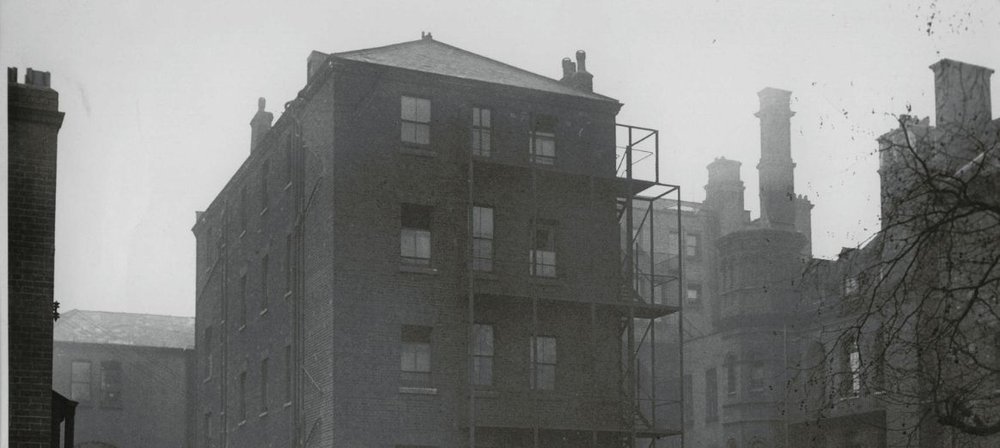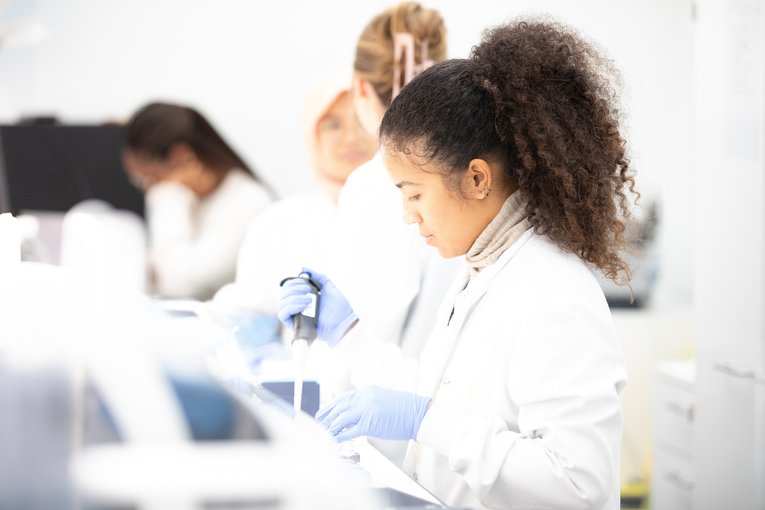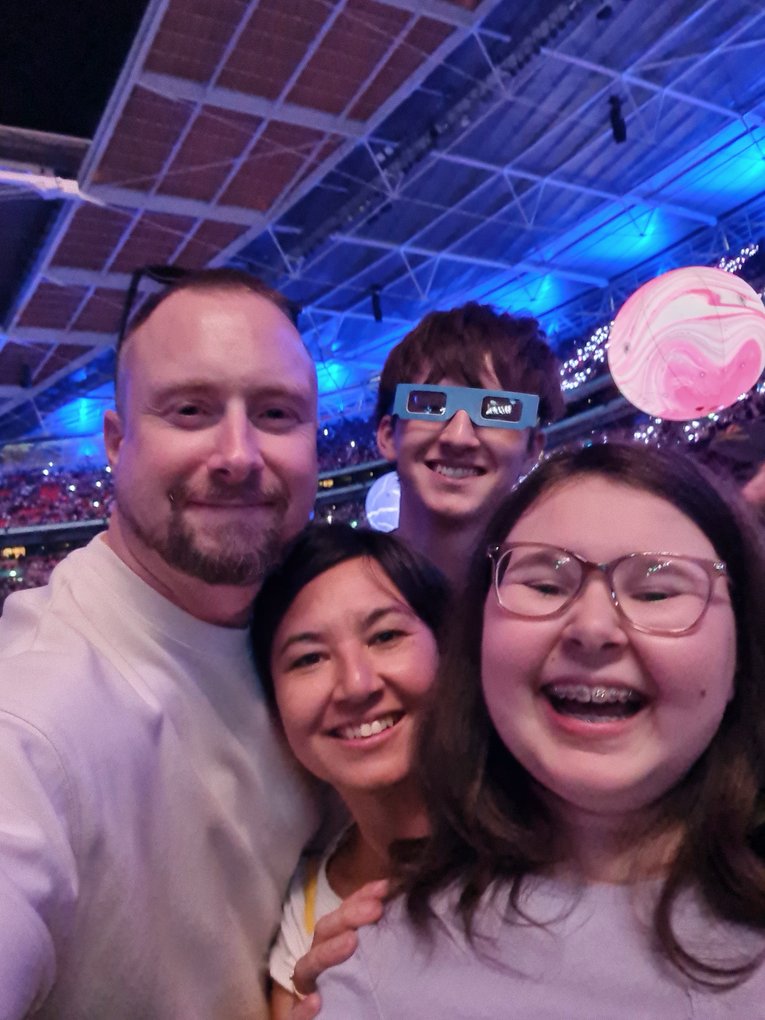
https://www.gosh.nhs.uk/news/gosh-during-the-1920s-bills-story/
GOSH during the 1920s – Bill’s Story
5 Nov 2021, 3:59 p.m.
Just over a year ago we received an email from Bill Berry — then 95-years-old. In his email, he thanked Great Ormond Street Hospital (GOSH) for looking after him as a baby and young boy. Bill passed away in September 2021, having lived a life of adventure. Here, we look at his time at GOSH.
Arriving at GOSH
Bill was born in Dalston in August 1925.
He arrived at GOSH two weeks after he was born, to be treated for a condition called pyloric stenosis. Known at the time as the Hospital for Sick Children, GOSH was a smaller hospital back then. With 268 beds, the number of operations carried out in 1925 stood at 1,617.
Pyloric stenosis develops after birth and is caused by overgrowth of the muscle controlling drainage of the stomach (the pylorus). It typically affects babies around six weeks old. The overgrowth of the pylorus causes the outlet of the stomach to be blocked, meaning that milk cannot drain effectively. As all the feed is vomited, babies with the condition can become very dehydrated.
An evolution of treatment
In the early 20th century a procedure called pyloromyotomy emerged – otherwise known as “Ramstedt's procedure”, after the German surgeon Conrad Ramstedt.
As a baby, Bill was likely one of the first generation to have this operation.
GOSH’s Mr Simon Blackburn, a Neonatal and Paediatric Surgeon, describes a pyloromyotomy as a procedure where the muscle layers of the pylorus are split, without entering the stomach itself.
Today, pyloric stenosis is still treated by a pyloromyotomy. “It’s an interesting example of an operation that hasn’t changed that much at all,” says Mr Blackburn. “The operation itself is the same, although we now perform the procedure using laparoscopic (keyhole) surgery, meaning the way we access the pylorus has changed”.
“From a surgical technique point of view, the main change (between the 1920s and now) is that it was originally done through an open incision in the right upper quadrant – you’d make an incision, you’d take the pylorus out of the tummy, split the muscle, put the pylorus back into the tummy and then close the wound," Mr Blackburn explains. “Following this approach, we started doing slightly more cosmetically appealing incisions through the top of the tummy button, and now we’d do the operation using keyhole surgery,” he explains.
Despite being the same operation – albeit with a different, less invasive approach – Bill’s pyloromyotomy during the 1920s would have been considered significantly riskier than it is today.
“Open abdominal surgery on a six-week-old baby in the 1920s would have been quite a big deal” Mr Blackburn points out.
Memories of GOSH

Bill's operation was successful, and he remained an outpatient for five years.
“And I am here today to tell my story at 95-years-old,” he told us in his email.
Right up until Bill passed away in September this year, he could remember some of his time at the hospital.
He had one specific memory, from when he was around four or five years old, of standing outside the hospital, looking up at it and thinking it seemed like a “great big house”. He could also remember his mother waiting at the pharmacy for some medication.
Bill said his parents often spoke of his early years and would say how impressed they were that GOSH saved his life.
He also recalled his parents talking about a Dr. Schlesinger (pictured below), and how this doctor had played an important part in Bill’s early years.
This would have been Dr. Bernard Schlesinger (1896-1984), who had a long career at GOSH as a general paediatrician (and whose son was the noted film director John Schlesinger, of ‘Midnight Cowboy’ fame!).
Dr. Schlesinger’s mentor at GOSH was Dr. John Poynton, who wrote about pyloric stenosis in his unpublished memoir of his work at GOSH from the 1890s-1930s.

Later in life
On becoming a young man Bill went to join the navy, where he stayed for 12 years.
Later, he became an international diving instructor and swimming association teacher.
He married his wife Norah in 1950 and they stayed together for 57 years, until Norah sadly passed away.
Norah and Bill had two children together, both of whom had pyloric stenosis as babies. This is not surprising, as we know children of people who have had pyloric stenosis are more likely to have the condition themselves.
Bill was living in Lyme Regis when he passed away in September this year.
From his home, he still checked in on GOSH, to see what the hospital was up to. When we spoke to him he had a copy of GOSH Charity's Pioneer magazine on his coffee table. As Bill’s eyesight was not at all good, his friend Michelle would read him stories and articles.
Bill thought highly of GOSH and was grateful for the hospital enabling him to live a long, fulfilled and happy life. For many years before he passed away, he donated to the charity every month.
“GOSH is absolutely marvellous. It’s great so many children get so much help these days,” he told us. “Thank you GOSH for saving me."


NIHR launches £13.7m investment into brain tumour research
The National Institute for Health and Care Research (NIHR) has announced a £13.7 million investment that will support ground-breaking research to develop novel brain tumour treatments in the UK.

New consortium aims to help improve care for arthritis patients
A new UK-led research group, including Great Ormond Street Hospital and University College London, aims to improve the lives of children, young people and adults with arthritis by defining for the first time what being in ‘remission’ from arthritis truly

Great Ormond Street Hospital joins the Circular Economy Healthcare Alliance (CEHA)
By joining CEHA, Great Ormond Street Hospital reaffirms its commitment to ‘do no harm’—not only to our patients, but to the environment and future generations.

‘Ready-made’ T-cell gene therapy tackles ‘incurable’ T-Cell leukaemia
A groundbreaking new treatment using gene-edited immune cells, developed at GOSH and UCL has shown promising results in helping children and adults fight a rare and aggressive cancer
